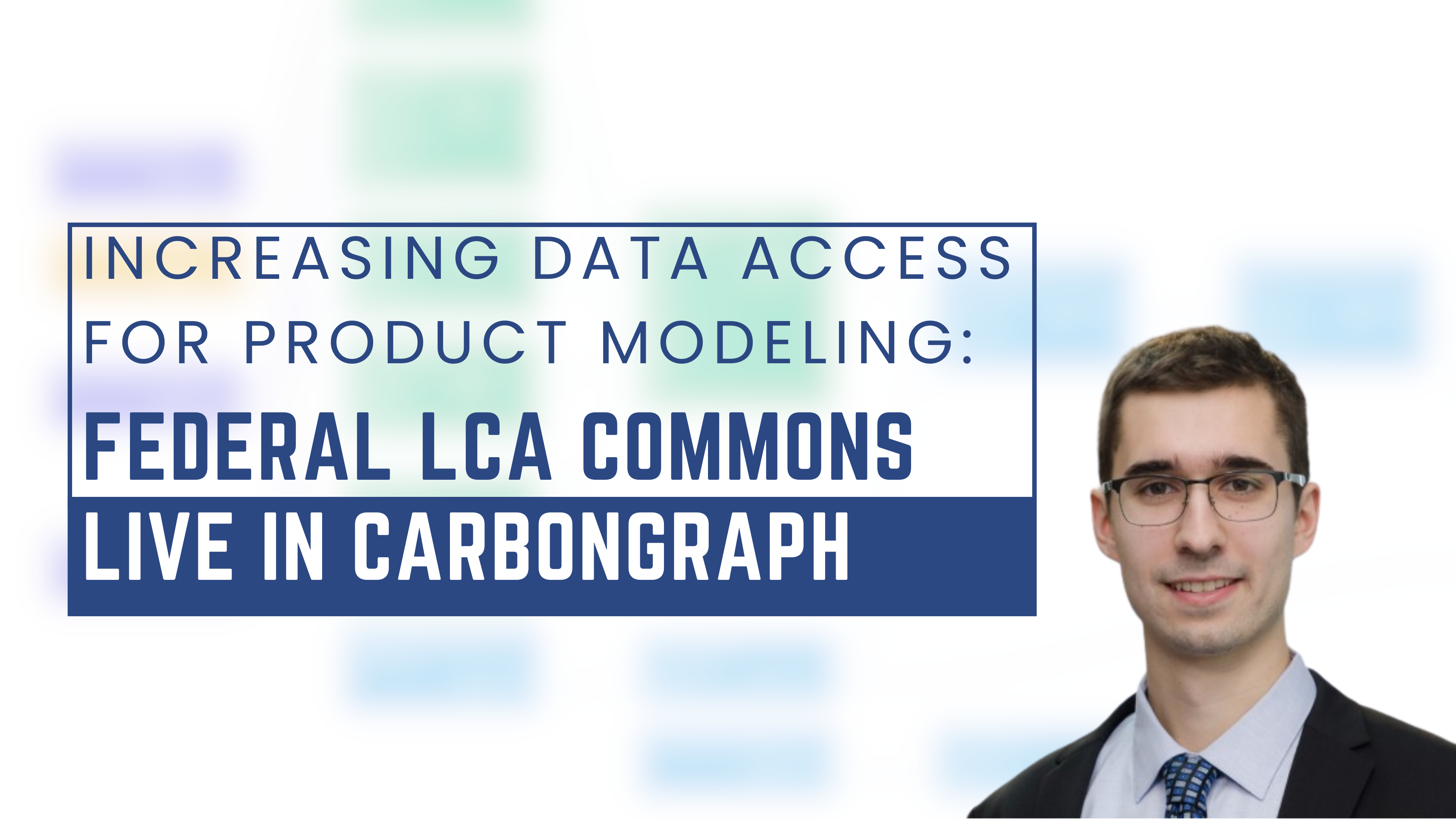Increasing Data Access for Product Modeling: Federal LCA Commons Live in CarbonGraph

By Luke, Head of Product at CarbonGraph
Today, I’m thrilled to share a big update we’ve been working on: CarbonGraph now includes full access to the Federal LCA Commons dataset—completely free for all users.
If you’re modeling physical products that touch U.S. transportation or electricity systems (and let’s be honest—a LOT do), this is a powerful upgrade. The Federal LCA Commons is one of the most trusted, open-access databases for U.S.-specific life cycle data, and now it’s at your fingertips—built right into CarbonGraph’s modeling interface.
Let’s walk through what it is, why it matters, and how it can supercharge your next model.
Why Federal LCA Commons?
There are plenty of life cycle databases out there. But very few offer the kind of U.S.-specific, public domain coverage that the Federal LCA Commons does—especially when it comes to transport and energy systems, two sectors that often dominate a product’s footprint.
We integrated this dataset with one goal in mind: make it easier and faster to build shareable, trustworthy models that reflect the real-world infrastructure your products rely on.
Cradle-to-Gate or Gate-to-Gate? Your Call.
One of the standout features of this dataset is flexibility. The Federal LCA Commons includes reference processes in both cradle-to-gate and gate-to-gate formats:
- Cradle-to-gate processes are perfect for quick screening or when you want to understand upstream impacts without modeling every detail.
- Gate-to-gate gives you control when you need precision—ideal for building out custom systems, auditing assumptions, or tracing key contributors to your product’s footprint.
That level of granularity is rarely this accessible. Now it’s native to CarbonGraph.
What This Means for Modelers and Product Teams
Whether you’re an experienced LCA practitioner or just starting to build your first model, this release opens up new possibilities:
- Model faster: Drop in reliable U.S.-based processes without hunting through multiple external datasets or worrying about compatibility.
- Customize deeper: Use gate-to-gate entries to trace specific process-level impacts and build nuanced models that reflect your real-world operations.
- Screen with confidence: For early-stage product teams or designers running quick comparisons, cradle-to-gate references offer the speed and simplicity to make smart tradeoffs early in the design cycle.
All of this—without needing a third-party license or navigating complicated import steps.
Built for the CarbonGraph Workflow
We didn’t just copy-paste the database into our system. We designed the integration to match CarbonGraph’s modeling philosophy: flexible, visual, and user-friendly. That means:
- You can search and filter processes like “diesel freight transport” or “U.S. grid electricity” directly inside the modeling interface.
- Selector cards work seamlessly with these processes, so you can set up scenarios, vary assumptions, and explore impact changes in real time.
- The data is tagged and documented so you know what you’re looking at—and how it fits into your broader reduction roadmap.
More Than Just a Database
Ultimately, this isn’t just about adding more data—it’s about removing friction. We believe anyone building a product should have the tools to understand its impact. By integrating a high-quality, public dataset into CarbonGraph, we’re helping more teams get there—faster, and with more confidence.
Whether you're deep into your reduction roadmap or just starting to explore sustainable design, we hope this addition unlocks new possibilities for your work.
Ready to Explore?
Log in to your CarbonGraph account and start modeling with the Federal LCA Commons dataset today—no upgrade required. Just head to your model, add a process, and start searching.
And as always—if you’ve got feedback, ideas, or wish lists for what we should tackle next, reach out. We’re building this with you.
—Luke
Share
Got a Product in Mind? Let's Model It Together.
Tell us what you're working on, and we'll show you how CarbonGraph can bring it to life with environmental insights.